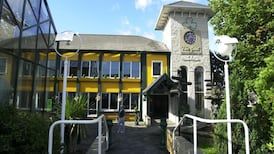Exporters could be facing into a difficult second six months of the year, the Irish Exporters' Association has warned.
The export revival evident in the early months of this year has been cut short in the second quarter, it says, forecasting that exports for the full year will show no increase on 2003.
Exports of €41 billion in the first six months of the year were up 2 per cent on the same period last year, according to the IEA's mid-year review.
However, the entire increase was accounted for by strong growth in the first three months, with exports in the second quarter down 1 per cent on the same period last year, with particularly significant falls in May and June.
"Higher oil prices, further security anxiety and continued weakness in the dollar and sterling have cut short the export sales revival," according to Mr John Whelan, chief executive of the IEA.
He pointed out that 2003 was a poor year for exporters and that exports in the first half were down 16 per cent on the high point reached in the first half of 2002.
"Exporters do not expect to increase sales over the second half of the year unless there is a significant swing in exchange rates in favour of companies exporting outside the euro zone and oil prices ease back substantially," Mr Whelan said.
The figures show a wide divergence in performance to different markets. Strong growth was recorded in exports to euro zone markets, with an 11 per cent increase to €18.2 billion in the first half.
"The core euro zone markets in France, Italy and Holland reflected good growth for Irish exporters," according to Mr Whelan.
However, exports to Germany continue to decline, falling 6 per cent in the first half, reflecting poor growth in that market.
The IEA believes that improving price competitiveness here - with inflation falling sharply over the past year - has helped to boost exports to the euro zone.
Some weakening of the euro against the dollar and sterling has helped exporters to the US and UK, the IEA says, but the level of the euro continues to cause difficulties, as do higher oil prices and security fears.
Sales to both the US and UK were 2 per cent down on the same period in 2003.
The other notable development was an 11 per cent increase in exports to Asia in the first six months, with clear signs that the rapidly expanding Chinese market is leading a general resurgence in Asia, which is creating greater demand for high tech Irish products.










